From Accessible to Equitable: Four Ways to Make the Experience of Your Space More Inclusive
Posted March 14, 2024
34 years after the passage of the Americans with Disabilities Act (ADA), the design community has made great strides in making the built environment more inclusive. But while ADA compliance focuses on physical accessibility, it does little to ensure equitable experiences within a place. As designers work to create destination-like environments in the public and private sector through interactive elements, sensory displays, and rich media content, we must ask ourselves: are we really providing equitable experiences for all?
The Need for Experiential Accessibility
Experience is a form of communication. It begins with a message–a story–which becomes the foundation for interactions, emotional responses, and behaviors. Of course, communication in today’s world is far different than when the ADA was passed in 1990.
As the population grows and demographics shift, more people than ever need unique accommodations. The World Health Organization estimates that by 2050, 3.5 billion people will need assistive products such as wheelchairs, hearing aids, or apps. Meanwhile, technology has changed the way we interact with space, and with each other. This trend has quickened in recent years; McKinsey’s 2022 Global Digital Sentiment Survey found that consumers are interacting digitally with twice as many industries as before the pandemic.
Our increased interaction with, and reliance on, technology means we can no longer expect to reach people in traditional ways. For example, because the audio capabilities of mobile technology have become so advanced, less than 10% of blind and visually impaired people today read Braille. Instead, we must design in a way that is adaptable to new technologies, and the ways people choose to utilize them.
Four Pillars of Accessible Experience
One practical way to think about accessible experiences borrows four principles from the Worldwide Web Consortium’s Web Content Accessibility Guidelines (WCAG): “perceivable, operable, understandable, and robust.” Though these guidelines are specific to digital experiences, we believe the four principles can be applied to experiential accessibility as well.
1. Perceivable
At its most basic level, perception is sensory awareness, so an accessible experience should activate as many senses as possible. Many experiences already offer both audio and visual components; for instance, closed captioning or audio narration. But is this enough? When designing the Statue of Liberty Museum, we knew that while audio recordings served an educational purpose, they could never summon the same emotional response as seeing the statue in all its glory. Touching Lady Liberty’s face, torch and feet, however, could be powerful and inspirational moments for visually impaired visitors.

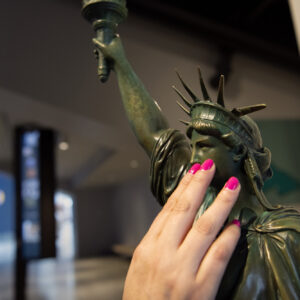
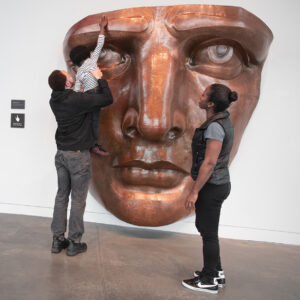
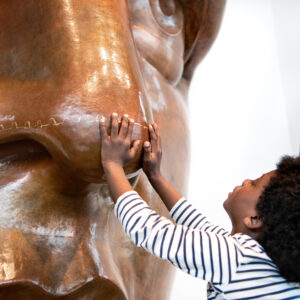
2. Operable
Another consideration at the Statue of Liberty Museum was ensuring that 4.3 million annual visitors could fully operate each of its interactive exhibits. First, rails and displays are placed at heights that accommodate diverse ages, sizes and mobilities. Next, user interfaces at each touchpoint are equipped with “Navigational Pads” which are widely used in everything from ATMs to voting booths, making it more likely that a visitor will be familiar and comfortable with its UX.
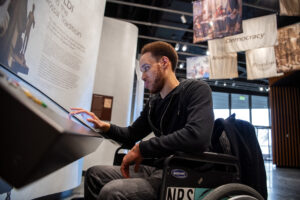
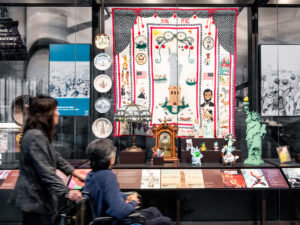
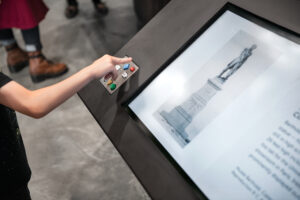
3. Understandable
On a physiological level, people of different abilities may comprehend things differently. For example, graphics that rely on color may not be universally understood, and some fonts are easier to discern than others for people with visual impairments. On a more cognitive level, an accessible experience should connect with users of varying ages, reading levels, languages and subject matter knowledge.
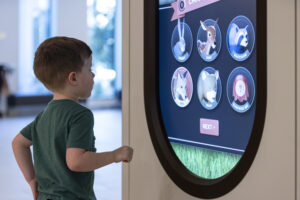


4. Robust
Like ADA compliance, we should not be satisfied with providing minimum levels of compliance. The aim of experiential design is to be memorable, inspiring, and impactful—not just for some, but for all. When designing “Loma Land,” an interactive digital experience that reduces anxiety by immersing pediatric patients at Loma Linda University Children’s Hospital in a virtual world of friendly forest creatures, we conducted multiple user-testing sessions to arrive at physical and media designs that spark joy for children of all ages and abilities. User-testing a design through mock-ups, prototypes, or virtual reality is one of the most effective ways to understand how robust an experience will be for different types of visitors.
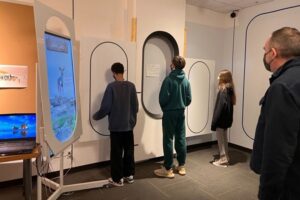
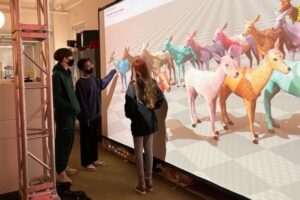

What We Can Do Today
While there is no equivalent of the ADA or WCAG for experiences in the built environment, we in the design and real estate industries have a responsibility to provide equitable, accessible experiences for all. This starts with setting standards for ourselves and our teams, educating our clients about their options, engaging accessible design consultants when appropriate, and holding ourselves accountable to the results of our work.
Experiential design has the power to move people in extraordinary ways, but this promise can only be fulfilled if we, as designers, commit to creating equitable experiences for one and all. It begins with a simple shift in perspective: accessible design is not about accommodating impairments. Rather, it is aspiring to create experiences that can be perceived, understood, operated and enjoyed by everyone.
Image credits:
Statue of Liberty Museum photographs © Keena Photo
Loma Land photographs by Sean Airhart © NBBJ


Join The Conversation